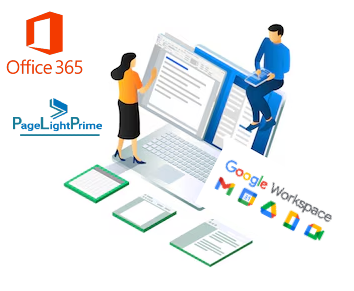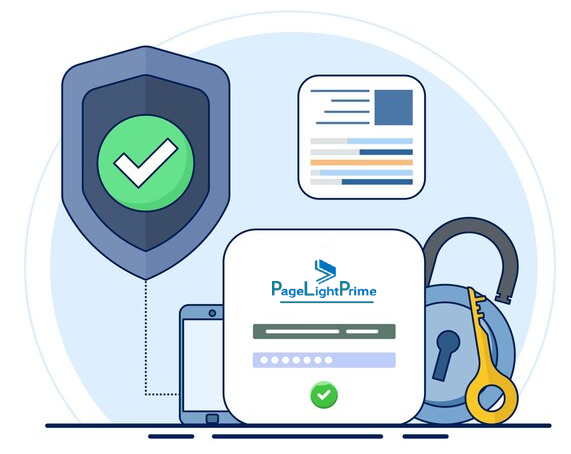Co-Authoring for Collaboration in Law Firms
In today’s legal landscape, effective collaboration is essential for success. Whether drafting complex legal documents, managing cases, or conducting research, co-authoring enhances productivity and service delivery. This guide explores the importance of co-authoring in law firms, provides real-world examples, and offers actionable steps for overcoming common challenges.
Written by Knowledge Team, posted on Aug 22, 2024

Document Co-Authoring in Law Firms
Document co-authoring allows multiple legal professionals to work together on a single document in real-time or asynchronously. This approach ensures that each team member can contribute their expertise without the delays associated with traditional document handling methods. But how does this translate into day-to-day legal practice?

The Impact of Document Co-Authoring in Legal Practice
Enabling simultaneous or sequential editing transforms the way legal teams handle case documentation, contracts, and pleadings. For instance, a mid-sized law firm recently utilized real-time document editing to finalize a complex contract within hours instead of days. Immediate access to the latest document version minimized errors and ensured consistent legal language.

Key Benefits of Document Co-Authoring
Streamlined Workflow
Multiple associates can draft different sections of a brief simultaneously, reducing turnaround time and improving efficiency.
Error Reduction
Instant highlighting of changes helps detect and correct errors quickly, preventing potential legal issues.
Consistent Document Quality
Maintains uniformity in style and content by keeping a single, up-to-date version of documents.
Enhanced Collaboration
Real-time sharing of insights and feedback fosters more cohesive teamwork and better case outcomes.

Choosing the Right Co-Authoring Tools for Legal Practice
Different co-authoring tools offer distinct advantages for legal professionals:
Microsoft 365
Integrates with legal software and provides robust security features. Ideal for firms needing advanced document management and tight integration with legal research tools.
Google Workspace
Known for simplicity and ease of use, suitable for teams that prioritize accessibility, though it may lack some specialized features of Microsoft 365.
PageLightPrime
Legal Document Management System (DMS), built on SharePoint, offers advanced co-authoring features, including real-time collaboration, secure access, and comprehensive version control. It integrates seamlessly with legal practice management software, ensuring a cohesive document management experience and enhancing collaborative efficiency.

Overcoming Common Challenges in Document Co-Authoring
Security Concerns
Use tools with encryption and access controls to protect sensitive client information. For example, a large law firm implemented Microsoft 365’s advanced security settings to safeguard documents.
Version Control
Implement version control tools to manage edits and maintain document integrity, avoiding confusion. One firm avoided a costly mistake by reverting to an earlier document version after an accidental deletion.
Adapting to New Tools
Provide thorough training and support to help legal professionals transition smoothly to new co-authoring tools.

Best Practices for Successful Co-Authoring in Law Firms
Establish Clear Roles and Responsibilities
Define who is responsible for drafting, reviewing, and finalizing documents to avoid confusion.
Set Expectations and Deadlines
Agree on timelines and milestones to ensure efficient document completion.
Utilize Version Control and Tracking
Use tools that track changes and allow for version comparisons to maintain document integrity.
Set Expiry Dates on Documents Shared Externally
When sharing documents with external parties (clients, consultants, etc.), set an expiration date to ensure that sensitive information is protected, and access is limited to the necessary timeframe.

Enhancing Legal Practice with PageLightPrime Collaboration Software
PageLightPrime Legal Document Management System (DMS) is built on Microsoft 365 and SharePoint, offering a powerful solution for boosting collaboration and co-authoring within law firms. Its seamless integration with Microsoft Word, Outlook, and web applications means that legal professionals can easily tap into its advanced features without disrupting their usual workflows. This setup allows for effortless collaboration and co-authoring, enabling teams to work together efficiently and securely using the tools they are already familiar with.
PageLightPrime streamlines collaboration at the Matter level by creating dedicated workspaces for each case or project. Within these workspaces, legal professionals can manage all related documents, communications, and tasks in one central location. Inviting both internal team members and external partners, such as clients or experts, is a simple process. Users can easily grant access to the relevant Matter workspace, ensuring that all contributors can participate effectively while maintaining control over permissions and security. By leveraging the full capabilities of Microsoft 365 and SharePoint, PageLightPrime delivers a unified and robust document management experience that enhances collaborative efficiency and ensures secure, seamless interactions among all members of the legal team.
Real-Time Collaboration
Leveraging the robust capabilities of SharePoint Online within Microsoft 365, PageLightPrime enables internal and external users to work on the same document simultaneously. This ensures that all team members, regardless of their location, can contribute effectively and stay aligned throughout the document’s development, minimizing delays and enhancing productivity.
Secure Access
Built on Microsoft 365, PageLightPrime benefits from advanced security features provided by Microsoft. It incorporates comprehensive user authentication, permission controls, and encryption to safeguard sensitive legal data. This ensures that only authorized individuals can access or edit documents, maintaining strict confidentiality and compliance with legal standards.

Version Control and Tracking
PageLightPrime utilizes SharePoint’s powerful version control capabilities to manage document revisions effectively. It automatically tracks changes and maintains a detailed version history, allowing teams to view previous iterations and revert to earlier versions if needed. This feature is crucial for preserving document integrity and ensuring all edits are accurately documented.
Integration with Legal Tools
Seamlessly integrating with other Microsoft 365 tools and legal practice management software, PageLightPrime offers a cohesive document management experience. This integration streamlines workflows by enabling users to access, edit, and store documents within the firm’s existing systems, enhancing overall efficiency.
Collaborative Efficiency
By harnessing SharePoint Online’s advanced co-authoring features, PageLightPrime significantly improves collaborative efficiency. The platform facilitates real-time communication and updates, ensuring that all team members are working with the most current information. This capability not only enhances productivity but also improves responsiveness to client needs and case developments.

Conclusion
“
Co-authoring is vital to the success of modern law firms. By selecting the right tools and implementing best practices, legal teams can improve efficiency, foster better collaboration, and enhance client service. Embracing these methods will position law firms to thrive in an increasingly competitive industry.
“
Co-Authoring and Document Collaboration in Law Firms (FAQ)
How does co-authoring benefit legal teams?
Co-authoring enhances legal team collaboration by:
Enabling Real-Time Edits: Multiple team members can update a document concurrently, accelerating the drafting process and ensuring everyone works with the latest version.
Facilitating Immediate Feedback: Lawyers can quickly add comments and suggestions, leading to faster revisions and a more cohesive final product.
Improving Workflow Efficiency: By reducing the need for multiple versions and email exchanges, co-authoring minimizes delays and keeps team members synchronized.
What makes PageLightPrime Legal DMS effective for law firm collaboration?
PageLightPrime, built on SharePoint and Microsoft 365, improves law firm collaboration through:
Real-Time Editing: Allows internal and external users to edit the same document simultaneously with real-time updates.
Advanced Security: Includes user authentication, permission controls, and encryption to safeguard sensitive legal data.
Robust Version Control: Tracks changes and maintains a detailed version history, facilitating effective document management.
Integration with Legal Tools: Seamlessly integrates with Microsoft 365 tools, providing a unified and efficient document management experience.
What security considerations are important for co-authoring with external users?
When co-authoring with external users, consider these security measures:
Encryption: Protect documents with encryption to prevent unauthorized access.
Access Controls: Set strict permissions to manage who can view or edit the document.
Authentication: Use strong authentication methods to verify user identities.
Compliance: Ensure that the co-authoring tool meets industry standards and regulations for data protection.
How does PageLightPrime handle document review in a controlled manner?
PageLightPrime manages document review through:
Controlled Access: Administrators can set permissions to control who can view, edit, or comment on documents.
Version Tracking: Maintains a history of document versions to track changes and revert to previous versions if necessary.
Approval Workflows: Customizable workflows require documents to be reviewed and approved by designated team members before finalization.
Audit Trails: Provides detailed records of all changes and reviews, ensuring transparency and accountability.
What are the best practices for using co-authoring tools in a law firm?
Defining Roles and Responsibilities: Clearly outline who is responsible for drafting, reviewing, and finalizing documents.
Setting Timelines and Milestones: Agree on deadlines to ensure timely document completion.
Utilizing Version Control: Implement tools that track changes and manage versions to maintain document integrity.
Providing Training and Support: Offer training to help users effectively adopt and use co-authoring tools.
Ensuring Security: Implement strong security measures to protect sensitive information.
